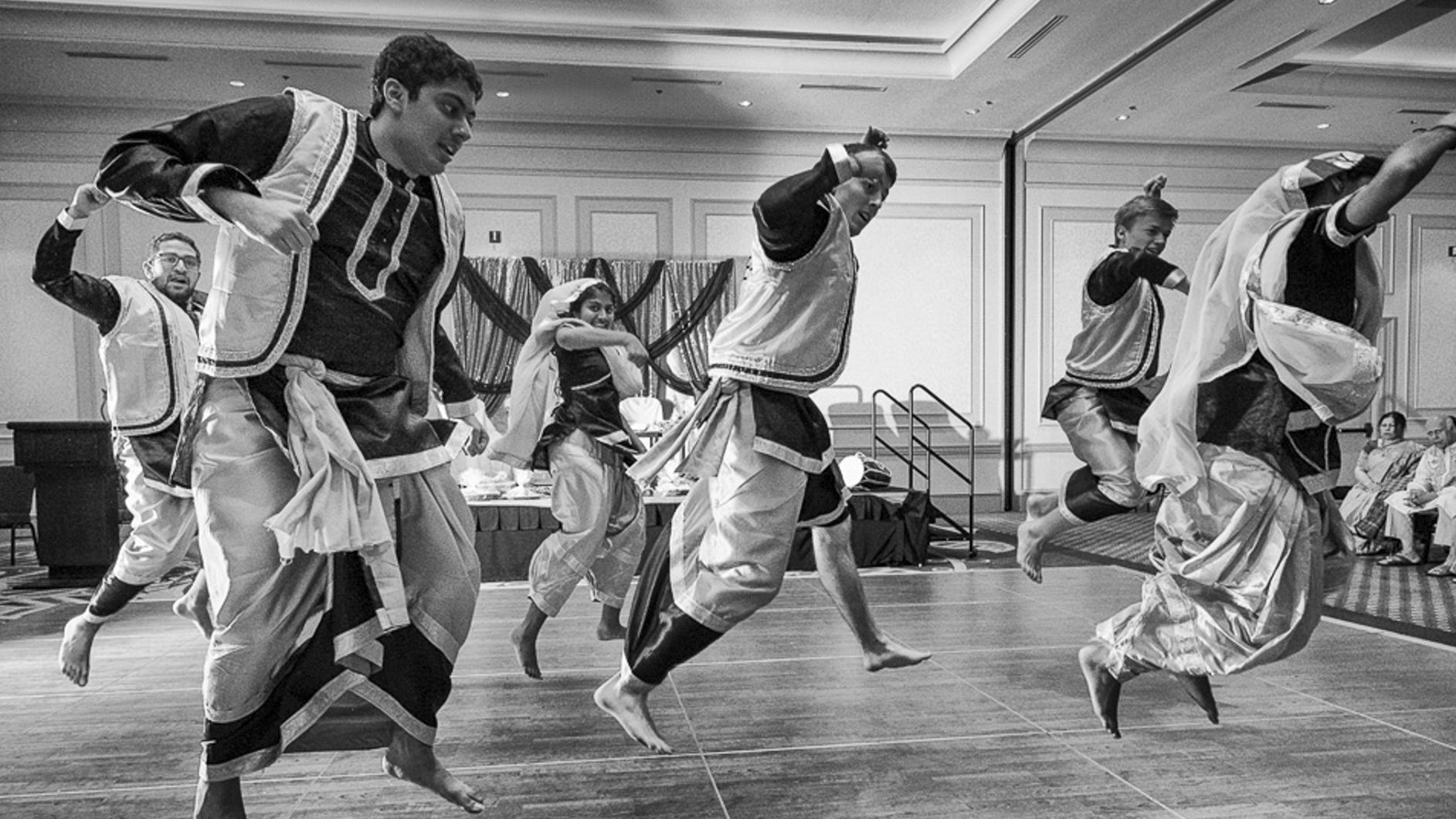My name is Jay Farrell, and I’m a Nashville, Tenn.-based freelance photographer specializing in documentary. I own my own photography businesses, Jay Farrell Photography, which specializes in wedding photography, head shots, and fine art/boudoir photography. My previous guest post, The Shift To Using A Mirrorless Camera: A Wedding Photographers Point of View, discussed my experience transitioning into mirrorless camera usage.
A good wedding photojournalist believes in capturing moods and emotions and anticipating the shot before it happens over mass quantity. For the past five months, I have been using my two Fujifilm X-T1s to do just this.
One major change in my photography since I went completely mirrorless is that I now exclusively use primes. My journey started with the 18-55mm and while it is a great kit lens, it doesn’t focus as fast in lower light as standard primes and as a result feels a tad awkward with the aperture ring right behind the zoom ring. Using primes, on the other hand, is liberating. It creates composition discipline, prevents too many wasted shots, focusses faster in low light, results in a better depth of field and a less “clinical” look, decreases the size and weight, and so on.
Since my last post, I have added the 12mm Zeiss Touit 2.8, 32mm Zeiss Touit 1.8, and the Fujifilm 56mm 1.2 to the stable.
In this post, I will discuss how I photographed a three day South Asian wedding inside the Marriott hotel in Franklin, Tennessee. Not only was the wedding a fun, beautiful, elegant, and colorful celebration, but it was also a rich cultural experience that I was able to capture using my mirrorless cameras.
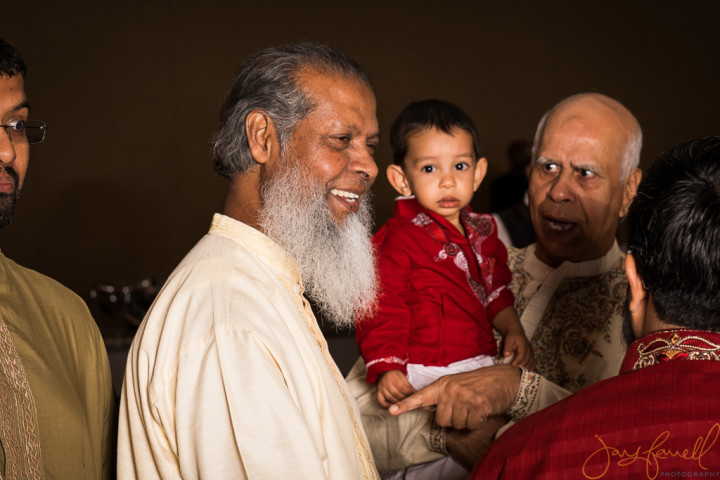
This was the first of five weddings I have captured with all mirrorless gear, and the second wedding where I used all Fujifilm gear.
My setup consisted of my main X-T1 around my neck with the Zeiss 32 1.8. On my Spider Holster around my waist, I kept my back-up X-T1 locked into the holster with the 56 1.2. This did wonders for quick access, and ease of transition to change focal lengths quickly. Both bodies had Elinchrom Skyport Transmitters on the hot shoe since I had an assistant using an off-camera Elinchrom Quadra rig and 17″ beauty dish, mounted on a monopod for lighting that wasn’t flat and boring. I also kept a Think Tank lens pouch tucked inside my belt on the other side where I kept spare batteries and the Zeiss Touit 12mm 2.8 for times when I needed the wide angle. Really this was used during dance performances and group free dance.
This way anything I needed to access quickly was on me. It’s all about efficiency when it comes to capturing the right moments.
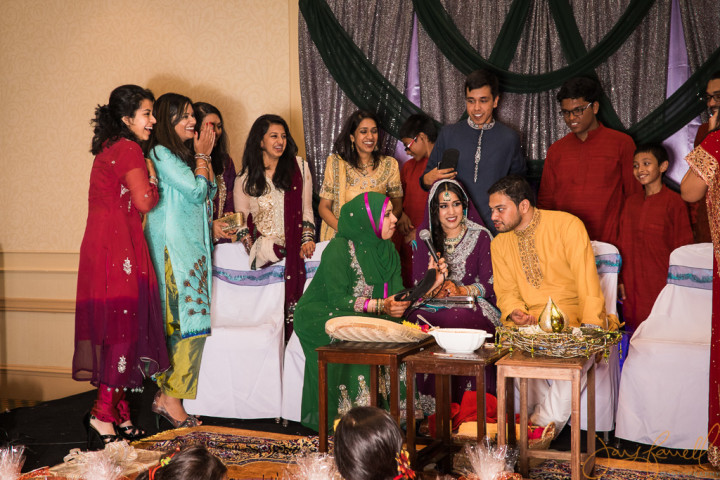
There was one thing that felt very liberating: if I were doing this with all SLR gear and zoom lenses, I’d feel weighed down. Over the course of a long wedding, this can make a difference to how you feel. I loved the ergonomics and the lightweight advantage. For the most part I didn’t have trouble with focusing and lighting was sufficient in most settings. I will say that the 56mm is much slower in low-light conditions especially when moving subjects are involved, so I found for parts of the event that I needed to capture a broad view. In these cases I used the 32mm. I used the 56mm for when I was further away from the subject area or needed very shallow depth of field. I used both lenses for candids as I moved about. For moving subjects, I used the 32mm for focusing speed. Most of the night my ISO was 800-1600 to get more ambient light and use lower flash power.
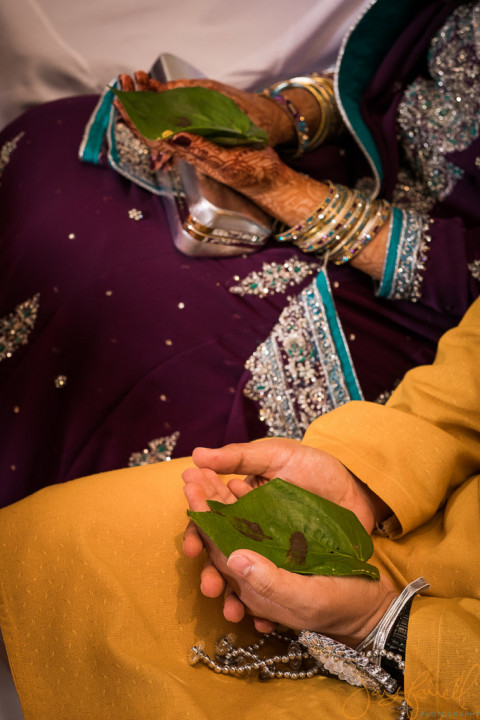
I’ve already established that I enjoyed the lightweight aspect of mirrorless gear, and prime lenses, but I also love how the Fuji captures color and sharpness. It is among the best of any gear I’ve used. This is why I do not own any DSLR equipment anymore. I sold it all by the time I had done a good mix of studio heashots, a couple of boudoir sessions, and indoor and outdoor weddings, and was comfortable with the gear and had stopped reaching for the Canon. Mirrorless works fine for people photography, and really works fine for anything but sports or wildlife photography. The only drawbacks are the slower focus speed in certain settings, and shorter battery life. I will discuss how I adapt my techniques for this, and why it’s worth it.
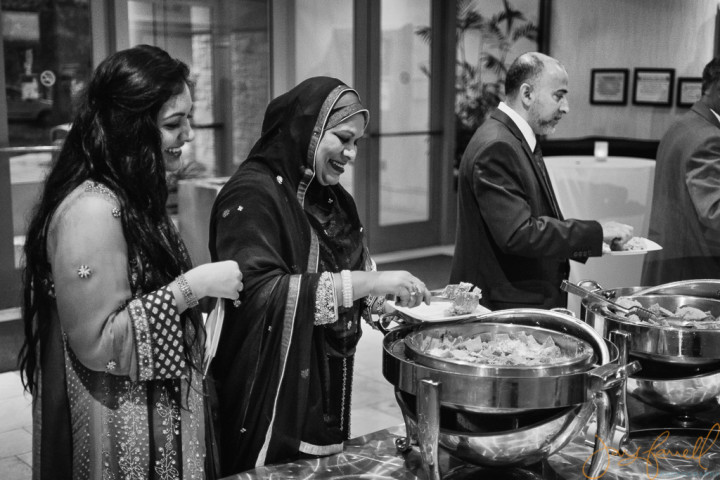
This particular shot was taken in natural light, and it was relatively low light. While you can use a run and gun approach with an SLR for this kind of shot, the Fuji may hunt for focus and not get the shot you want in a split second. I use the AF lock button a lot, otherwise known as back button focusing. I lock my focus point on the intended subject and snap when the time is right. Journalistic wedding photography is largely about anticipation. The mirrorless system teaches that discipline, which may seem like an inconvenience to some, but is a good technique to use regardless of system – it means getting your shot and less wasted ones.
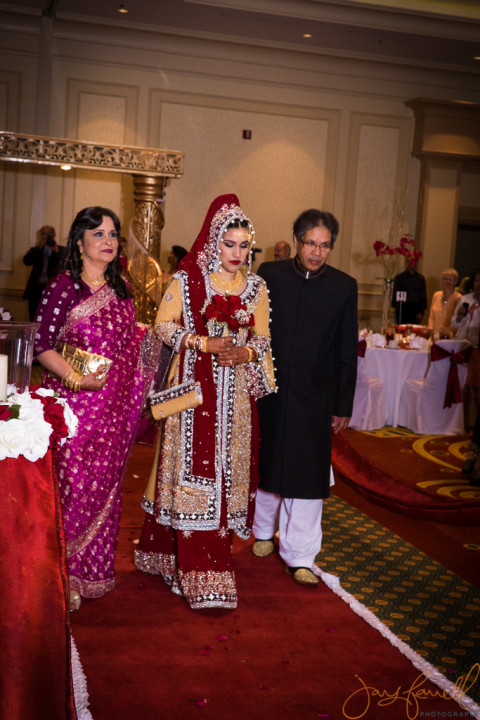
Hotel ballroom ambient light isn’t the same as the sun, but it was good enough for me to get my focus point. Using AF lock I kept my focus point and snapped as needed and moved with them. It is not designed to pan moving subjects (continuous focussing is) but I’ve found CF struggles in this lower light setting unfortunately. The 32mm locks focus fast–I moved with the subjects and my assistant was behind me with the off camera flash. It worked fine.
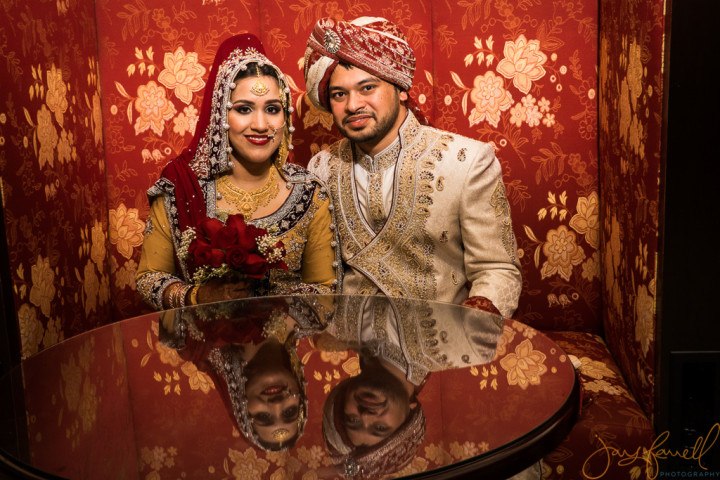
Given the rich colors at this event, I had the right tool for the job. Mirrorless are great for wedding photography (if you know how to use them and don’t expect them to be like your DSLR). They have their own learning curve, which I am showing you now. It’s a thinking photographer’s camera. The electronic viewfinder is great for helping you meter your exposures on the go and check depth of field. Battery life is no big deal, and I highly recommend the battery grips. When one battery dies, you can quickly change the one in the grip. I keep at least two on me, and the others in the camera bag. Batteries are cheap. I like the Wasabi Power as you get two with the charger. I bought around five sets. You get around 300-350 shots per battery for RAW shooting.
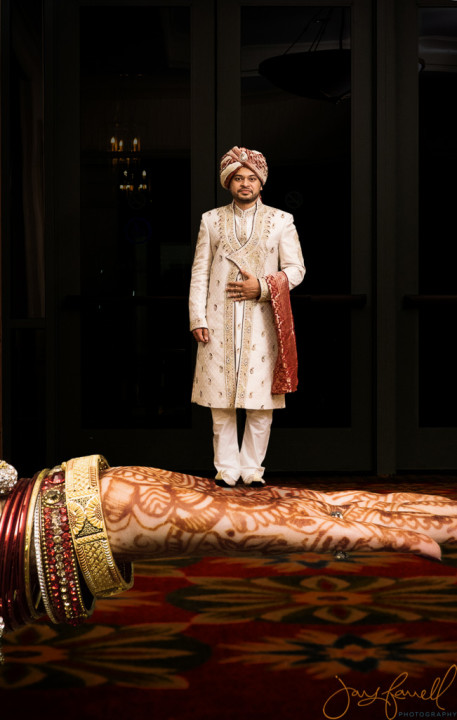
Now, let’s talk about ETTL flash. This may be a big deal to some, but I don’t trust ETTL flash anyhow. It didn’t turn out the way I wanted on my Canon system unless in a smaller room with lower ceiling, so I got to the point where I used on-camera flash in manual. Fuji flashes are the only ones at the moment that support ETTL on Fuji X systems. One myth debunked here is that you can use any hot shoe flash in manual mode, and it will work! So, you don’t have to use a proprietary flash.
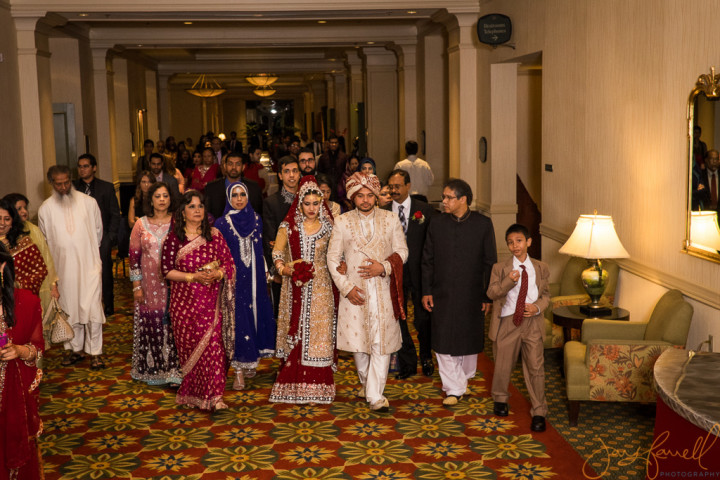
The speed of the Zeiss 12mm 2.8 is amazing. I used AF lock and snapped at the split second. It is a wonderful dance lens.
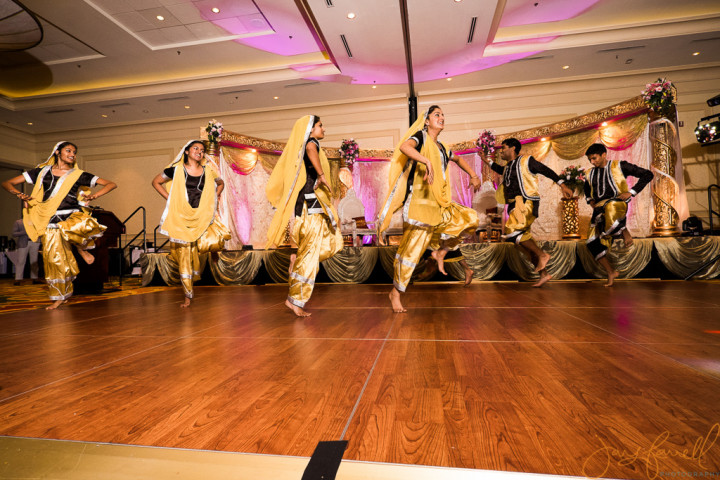
I always set the time in the menu on both bodies as close as possible. Then when imported into Lightroom, I sort by time captured, which syncs the bodies. Then when exporting to the folder, I rename starting with the date code and first file number, and they follow.
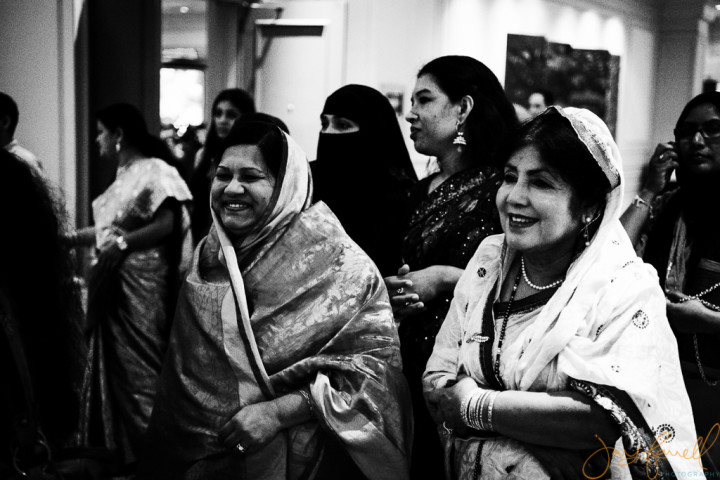
Like anything, adapt or perish. It takes time and practice to learn this system, but I have found the rewards well worth it.
If you have any questions for Jay, his wedding photography or his Fujfilm cameras, be sure to leave a comment below!
